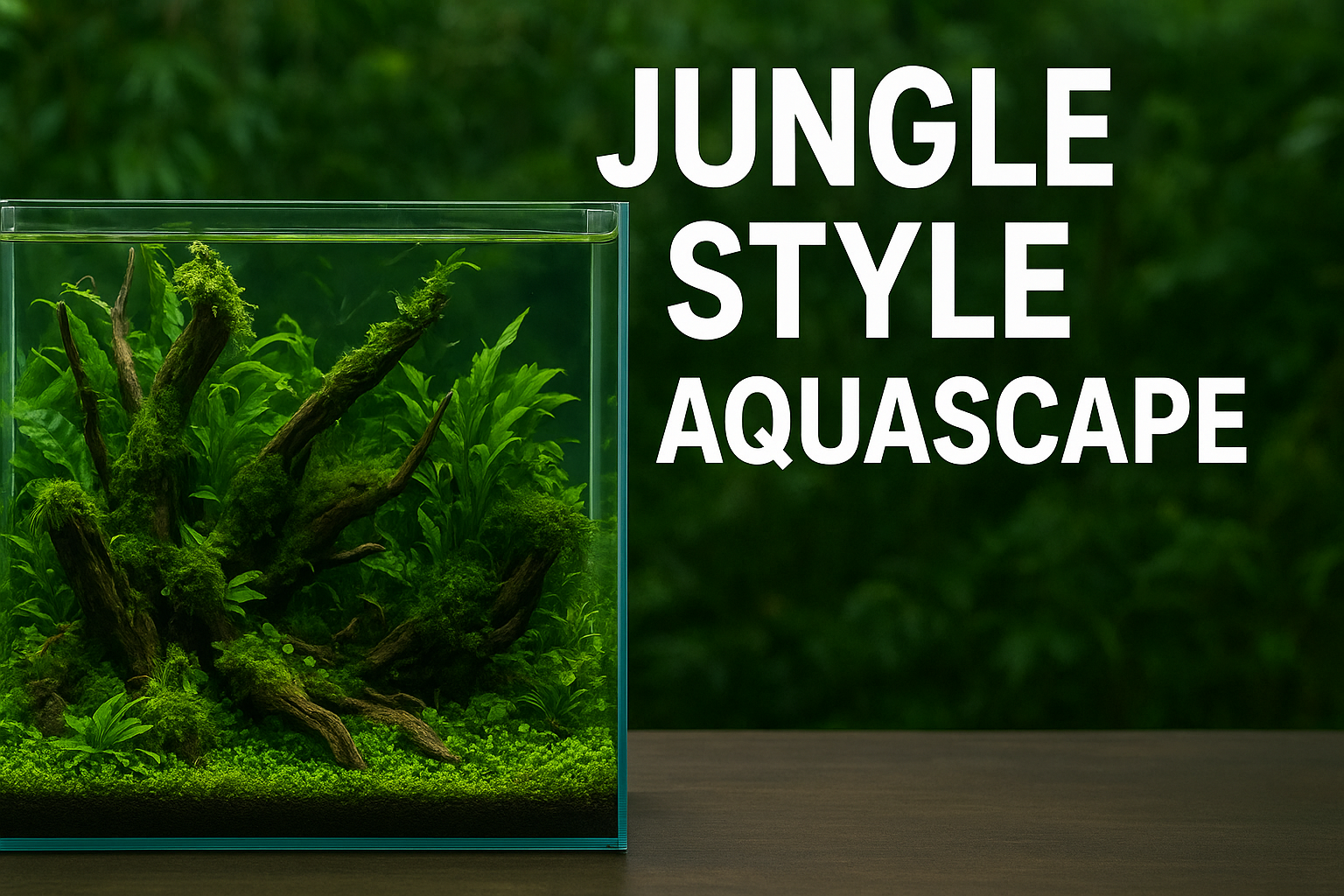Aquascaping has evolved into a form of living art where aquarium enthusiasts design underwater worlds that mimic nature. Among the various aquascaping styles, the Jungle Style Aquascape is one of the most captivating and natural-looking setups. Unlike highly structured styles such as Dutch or Iwagumi, jungle aquascaping embraces a wild, untamed aesthetic. It aims to replicate dense riverbanks, tropical forests, and overgrown aquatic landscapes.
In this guide, we will explore everything you need to know about jungle style aquascaping — its origins, characteristics, plants, fish, and shrimp selection, as well as tips for setup and long-term maintenance. By the end, you’ll be equipped with the knowledge to design your own thriving underwater jungle.
What is Jungle Style Aquascape?
A Jungle Style Aquascape is a planted aquarium setup that replicates the look and feel of a lush, tropical jungle. Unlike other aquascaping styles that prioritize symmetry and neat arrangements, the jungle style thrives on organized chaos. Plants grow densely, sometimes overshadowing each other, and hardscape elements such as driftwood and rocks blend naturally into the scene.
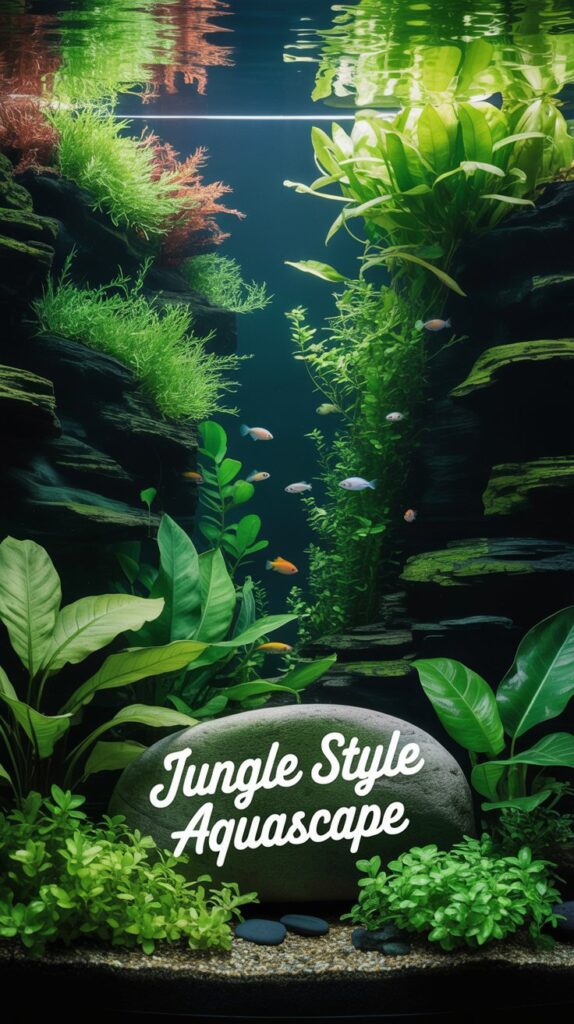
The goal is not perfection but authenticity — a design that makes your aquarium look like a slice of untouched wilderness.
Key traits include:
- Dense planting with tall and broad-leaved plants.
- Natural layering with foreground, midground, and background plants.
- Use of driftwood, roots, and rocks to mimic riverbanks or forest floors.
- Minimal trimming to encourage natural, wild growth.
- Slightly darker and shaded areas to simulate jungle canopies.
Origins and Inspiration
The jungle aquascape is inspired by South American and Southeast Asian rainforests, where rivers, streams, and lakes are filled with dense aquatic vegetation. In these natural habitats, light struggles to penetrate thick canopies, creating shadowy yet vibrant underwater environments.
Unlike Dutch aquascaping (which began in the Netherlands) or Iwagumi (a Japanese minimalist style), jungle aquascaping has no strict origin. It emerged as aquarists began experimenting with less controlled and more natural layouts, reflecting how plants grow in the wild without constant pruning or design intervention.
Characteristics of Jungle Style Aquascaping
- Wild, Overgrown Look – Plants are allowed to grow freely, forming dense patches.
- Large Leaf Plants – Species like Amazon Swords or Cryptocorynes dominate.
- Shaded Areas – Not every corner is well-lit; shadows enhance the jungle feel.
- Minimal Hardscape Visibility – Rocks and driftwood are present but often hidden under plants.
- Biodiversity – Jungle tanks often house a mix of fish, shrimp, and snails to enhance the ecosystem.
Essential Plants for Jungle Aquascapes
Choosing the right plants is crucial for achieving a dense, natural look. The jungle style favors tall, broad, and fast-growing plants that give volume to the aquarium.
Popular Plant Choices:
- Amazon Sword (Echinodorus bleheri): Large, leafy plant perfect for the background.
- Cryptocoryne species: Adds variety with different leaf textures and colors.
- Java Fern (Microsorum pteropus): Hardy plant that grows on wood and rocks.
- Vallisneria spiralis: Tall, grass-like plant for background density.
- Hygrophila difformis (Water Wisteria): Fast-growing and bushy.
- Anubias: Ideal for shaded spots and attaching to driftwood.
- Bolbitis heudelotii (African Water Fern): Adds texture and depth.
Tip: Combine fast growers with slower species to create both volume and stability.
Hardscape in Jungle Aquascaping
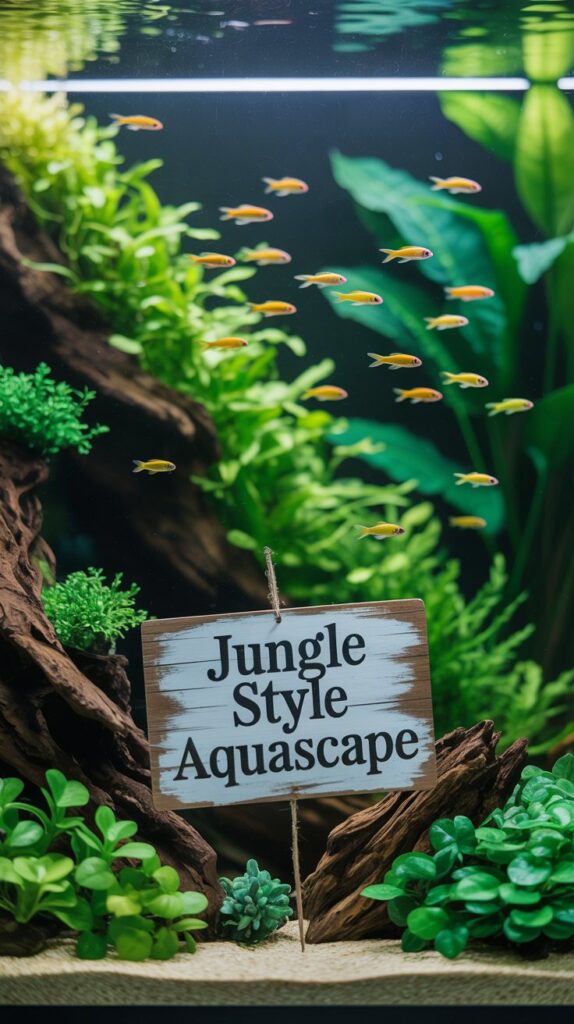
While hardscape is less prominent compared to other styles, it still plays an important role. Driftwood and roots are often arranged in a way that mimics fallen trees in rivers. Rocks may be used but are usually overgrown with plants or moss.
- Driftwood & Roots: Use large, branching pieces to create depth.
- Rocks: Natural-looking stones such as Seiryu or river rocks can add balance.
- Leaf Litter: Adding Indian Almond leaves or botanicals enhances the jungle authenticity.
Lighting for Jungle Aquascapes
Lighting is softer compared to Dutch or Iwagumi styles. Since jungle setups often use tall plants that block light, medium-intensity lighting is sufficient. This also reduces algae issues.
- Recommended: LED lights with adjustable brightness.
- Duration: 6–8 hours per day.
- Tip: Create light contrasts — brighter in some areas and darker in others.
Filtration and CO2
- Filtration: A strong filter is essential due to dense planting and heavy bioload. Canister filters work best.
- CO2 Injection: Not mandatory, but recommended for faster plant growth and vibrant colors.
- Water Flow: Moderate to strong flow mimics natural river currents.
Fish and Shrimp for Jungle Aquascapes
The right livestock brings your aquascape to life. Jungle tanks allow for a diverse community, as long as species are compatible.
Ideal Fish Choices:
- Tetras (Neon, Cardinal, Rummy Nose): Small schooling fish that enhance the jungle vibe.
- Angelfish: Larger centerpiece fish that thrive in tall, planted tanks.
- Gouramis: Add calm movement and elegance.
- Discus: A classic choice for a jungle-style setup.
Shrimp and Clean-Up Crew:
- Amano Shrimp: Excellent algae eaters.
- Cherry Shrimp: Add color and activity.
- Nerite Snails: Keep algae in check without harming plants.
Setting Up a Jungle Style Aquascape (Step-by-Step)
- Tank Size – Larger tanks (40 gallons and above) are ideal, but small jungle aquascapes are possible.
- Substrate – Use nutrient-rich soil for root-feeding plants like Amazon Swords.
- Hardscape Placement – Arrange driftwood and rocks loosely, not symmetrically.
- Planting – Start with background plants, then midground, and finally foreground.
- Lighting & Filtration – Set up medium lighting and a strong filter.
- Water Parameters – Maintain tropical conditions (24–28°C, pH 6.0–7.5).
- Stocking – Add fish and shrimp after cycling the tank.
- Patience – Allow plants to grow freely before trimming lightly.
Maintenance Tips for Jungle Aquascapes
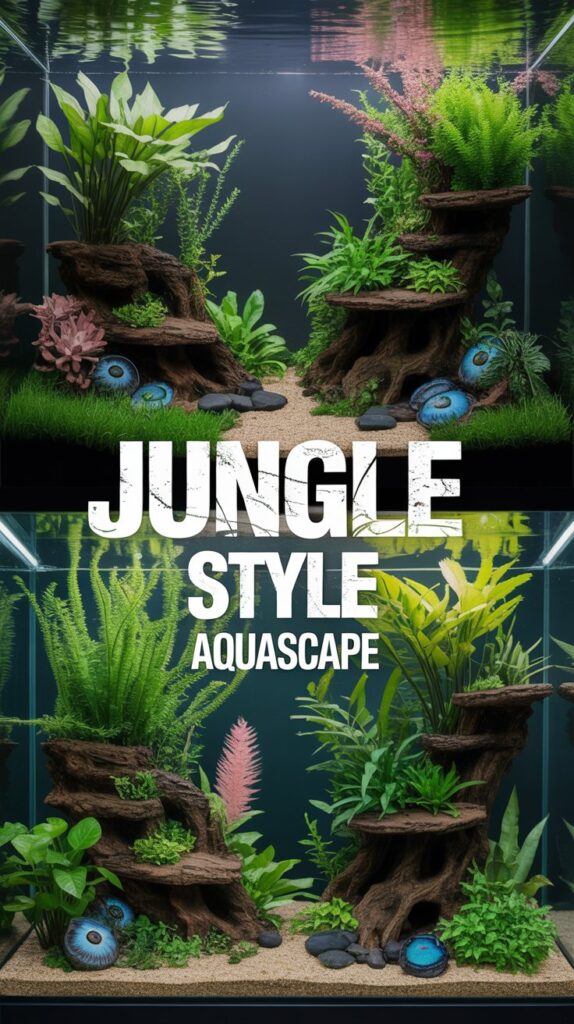
- Minimal Trimming: Only trim plants when absolutely necessary.
- Algae Control: Maintain balance between light, nutrients, and filtration.
- Water Changes: Weekly 20–30% water change keeps the ecosystem healthy.
- Fertilization: Use root tabs and liquid fertilizers to sustain plant growth.
- Monitor Growth: Rearrange only when plants overshadow each other excessively.
Advantages of Jungle Aquascaping
- Natural, low-stress look for both aquarist and fish.
- Less demand for frequent trimming.
- Provides excellent cover and hiding spaces for fish and shrimp.
- Allows for a rich biodiversity of plants and animals.
Challenges of Jungle Aquascaping
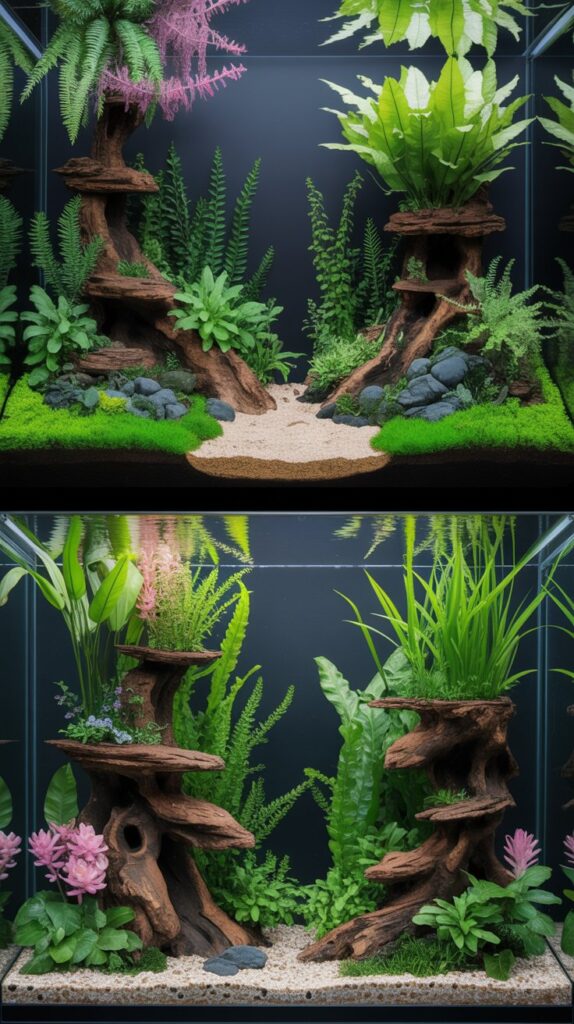
- Can become overgrown quickly if not monitored.
- Hardscape may disappear under dense plants.
- Some species may outcompete others for light and nutrients.
- Requires strong filtration due to higher bioload.
Conclusion
The Jungle Style Aquascape is a mesmerizing underwater wilderness that captures the untamed beauty of nature. Unlike structured styles, it thrives on freedom, randomness, and natural growth. With tall plants, hidden driftwood, and diverse aquatic life, a jungle aquascape feels like a slice of tropical forest inside your aquarium.
Whether you are a beginner or an experienced aquascaper, this style offers both beauty and practicality. With the right balance of plants, fish, and maintenance, your aquarium can flourish into a breathtaking aquatic jungle.
FAQs About Jungle Style Aquascaping
1. What size tank is best for a jungle style aquascape?
Larger tanks (40 gallons or more) work best, but smaller tanks can also be designed with jungle aesthetics.
2. Do I need CO2 for a jungle aquascape?
CO2 is not mandatory but helps promote healthy plant growth and enhances colors.
3. Which fish are best for a jungle aquascape?
Tetras, Angelfish, Gouramis, and Discus are excellent choices. For shrimp, Amano and Cherry Shrimp are recommended.
4. How often should I trim plants in a jungle aquascape?
Trim only when plants overcrowd or block light excessively. Minimal trimming is ideal.
5. Can beginners try jungle aquascaping?
Yes! It is one of the most beginner-friendly styles since it allows plants to grow freely without strict design rules.

